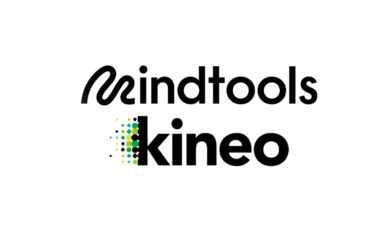It’s safe to say that hybrid working is now a thing. And OK, we don’t really know exactly what that “thing” looks like yet.
But it seems pretty clear that, post-pandemic, most of us are not going back to 100 percent office-based working.
As with all change, some of us are happy about it and others aren’t. Many of us have worries. From anxieties about ensuring that we will be physically safe back in the office, to wondering how we will (re)connect with our colleagues. And whether it feels psychologically safe to do so.
One thing’s for sure, managing a hybrid workforce requires different thinking. Managers and HR teams must review how they recruit, develop and motivate to get the best from their people in this new hybrid world.
Careful consideration of the policies, procedures and processes is needed to optimize productivity. At the same time, we also need to create an inclusive workplace culture for all. Regardless of where you’re working from.
There are three issues in particular that concern me about long-term (permanent) hybrid working. How do we maximize our human connection, create positive team energy, and build a positive performance culture?
Hybrid Working: Maximizing Our Human Connection
We all require a deeper level of connection than is possible through transactional communications alone. As author and University of Houston research professor Brené Brown puts it, “We are hardwired for connections, curiosity and engagement.”
When physically working together in an office, studies indicate that we spend something like 10 percent of our time forming the connections that allow successful collaborations to flourish.
We can miss such opportunities when we don’t work together in the same place at the same time. So now we must make conscious efforts to recreate these opportunities for a hybrid workforce.
“There’s a great opportunity to begin to explore how we create an environment that is safe for people who want to have conversations about flexibility, who want to be flexible, vs. fighting that change.”
Peter Yobo, PWC
As always, managers need to lead by example: in this case, to avoid communications becoming superficial. But we can all make a positive difference. Have you thought about what you could do to generate a greater feeling of camaraderie in your team? How can you organize projects so that people have adequate opportunity to bounce ideas off each other?
We all need to look for different ways to connect in this hybrid world. But how could you foster a greater sense of community? How can you build opportunities for people to interact?
From the people I work with, I observe that managing a hybrid team requires an element of over-communication. We need to create the time and space for better quality conversations to take place. This will help to develop that deeper sense of human connection in a hybrid world. And this needs persistence.
Creating Positive Energy on a Hybrid Team
Our personal energy is enhanced through uplifting, invigorating and rejuvenating team relationships. It’s this relational energy that helps create positive and productive working environments.
Have you ever “felt” the energy of a team when you enter a room? I really believe that team performance generally matches the energy within the team. But where there’s negative energy, teams can perform significantly worse than those with positive energy.
How mentally engaged staff are at work, how enthused they are about their jobs and how willing they are to make extra effort, is largely determined by the type of energy generated when everyone works together.
So, if positive energy is transmitted when we’re in contact with each other, managing a hybrid team will require processes and time for people to “get relational” with one another. Team members will need time to communicate and connect, because it will create positive energy. Regardless of where people work from, or when they work.
Have you considered whether it’s feasible to physically get teams together occasionally, to connect face-to-face, to generate that positive relational energy? If that’s not possible, hybrid teams need to embrace video conferencing in ways that capture and enhance the collective energy.
How Do We Create a Positive Performance Culture?
Regular check-ins with colleagues must surely be a quick win. Whether it’s 30 minutes every day, 45 minutes a week or an hour every month, it’s important to schedule them into diaries. Make them a regular commitment, whether that’s face-to-face or virtually.
By establishing clear expectations, creating a performance management routine, and regularly evaluating progress against goals, we can be confident that performance is being managed effectively. Issues are picked up early and people are supported to do a great job.
So Is Hybrid Here to Stay?
Although it’s certainly more challenging to manage, allowing teams to work varying hours, times, and locations can bring mutual benefit. Hybrid working offers more flexibility and will help more people access the labor market. It will support people to stay in work, allowing individuals to manage caring responsibilities and achieve a better work-life balance.
Hybrid working can also support enhanced employee engagement and wellbeing. Other important benefits could surely include increased loyalty and commitment, and higher job satisfaction. We can expect increased engagement, reduced absenteeism and better mental health. Not to mention improvements in performance, motivation and productivity.
Despite some fears which need to be overcome, it seems that the future of the workforce is a hybrid one. And, actually, it’s already here, isn’t it?
Hybrid Working: Your Fears and Solutions
In our #MTtalk Twitter chat last Friday, we discussed how you feel about hybrid working. Here are all the questions we asked, and some of the best responses:
Q1. Hybrid working is a mix of working virtually and face-to-face. Is it just a fad or is it here to stay?
@pavelStepanov77 It will probably stay for a year or two. When all workers are already vaccinated, businesses will probably go back to normal.
@SoniaH_MT #HybridWorking is HERE TO STAY! Some have wanted their companies to adopt it “forever.” Certain conditions have forced companies to embrace this alternative work environment – if they wanted to remain in business.
Q2. What do you find attractive about the idea of hybrid working? What are your fears?
@virtudeskcom Working in the office with a mix of working from home improves working satisfaction. It also increases the productivity of your employees. One of the fears we are seeing is the consistency of the employees. Some of them may abuse the benefit of the setup.
@GThakore Effective in current scenario! However, connective touch is missed in virtual working.
Q3. How do you remain motivated and focused when you’re virtual compared with face-to-face?
@Yolande_MT Motivation isn’t a problem – it’s a bigger problem for me to be motivated to switch off too. I’ve learned, though.
@MindfulLifeWork I think real motivation comes from connecting our personal meaning to our work’s meaning. If that connection is solid, motivation is overflowing. Being fully honest with ourselves is essential. Staying organized also helps!
Q4. How do you coordinate tasks, meetings etc. with colleagues who are also working hybrid schedules?
@yehiadief I think we should be good friends rather than good coordinators – it will ease the day.
@SoniaH_MT To coordinate tasks, meetings etc., with other hybrid-scheduled colleagues, we would need a centralized collaboration or project management software.
Q5. How is hybrid working affecting the quality of your workplace relationships?
@PmTwee Hybrid working works effectively only if parties should agree on terms. So that they won’t fall out of sync, irrespective of physical distance.
@TheTomGReid As a strong introvert, most workplace relationships were a bothersome distraction to me. I’ve been called anti-social, and perhaps I am a bit. But I’m AT work TO work, not to socialize.
Q6. How do you build community, morale and celebrate milestones with colleagues while hybrid working?
@J_Stephens_CPA Company Bingo nights have been a big hit. Our team tries to schedule a monthly #VirtualHappyHour – which connects the WFH staff that used to be left out on the office happy hour. (I’m hosting today as a matter of fact.)
@SarahH_MT JUST DO IT! I don’t see any reason why you can’t still build community, morale and celebrate milestones. As long as the leadership culture is one of prioritizing these things as important – and encouraging time for this to happen, remotely if needed.
Q7. Why might people’s visibility be an issue with hybrid working?
@MarkC_Avgi For micromanaging owners or supervisors, the visibility of those who work for them is a HUGE issue!! For those who are able to properly manage, being aware of what their people are doing is much better than just visibility.
@WonderPix Out of sight…be sure to self-promote, share what you’re doing, connect for informal chats, make the effort. Just like you would if you were co-located.
Q8. How would you convince your supervisor that it’s a good idea for you to adopt or continue a hybrid schedule?
@Midgie_MT Highlight the increase in productivity. Agree set deliverables and deadlines, then let me do the work.
@ColfaxInsurance Your supervisor should have each team member’s best interests as a priority. If you’re genuinely doing better work in a hybrid schedule, and you can give good points and show proof, there should be no reason why they can’t accommodate you.
Q9. What are your tips for leading and/or managing hybrid working teams?
@MindfulLifeWork Adopt a coaching mindset that seeks to develop and delegate, rather than supervise and control. A lack of trust results in stifled workers. Hybrid work has forced companies to trust their personnel and it’s mostly paying off… scale trust.
@TheToniaKallon As a leader or manager: 1) Work with your team to set working agreements while understanding that each person has different needs. 2) Be open to sharing and receiving feedback and adjust accordingly. 3) Acknowledge and recognize everyone, regardless of location!
Q10. All in all, is hybrid working likely a long-term solution for you/your organization, or not. Why?
@JKatzaman Hybrid work can be done long term, especially if stakeholders get comfortable with it and come to expect the arrangement.
@MikeB_MT Remains to be seen. I think there will be an element of hybrid work that stays for some employees, but there seems to be a strong pull to return to more traditional on-site work. I’m hopeful that, through trust and progress, we’ll continue to become more flexible.
To read all the tweets, have a look at the Wakelet collection of this chat over here.
Coming Up
New ways of working are forcing us to do things differently, and they influence how we interact with our colleagues. All of us are very good at doing some things, but not other things.
Next time on #MTtalk, we’re going to talk about your superpower and how to find it, use it and share it. In our Twitter poll this week, we’d like to know what you think of when you hear the word “superpower.”
Useful Resources
In the meantime, if you want to explore the topic that we covered this week, check out the resources below. (Please note that some of these may only be available in full to members of the Mind Tools Club and to Mind Tools for Business licensees.)
Top 10 Challenges of Managing a Virtual Team Infographic
The Four Principles of Change Management




